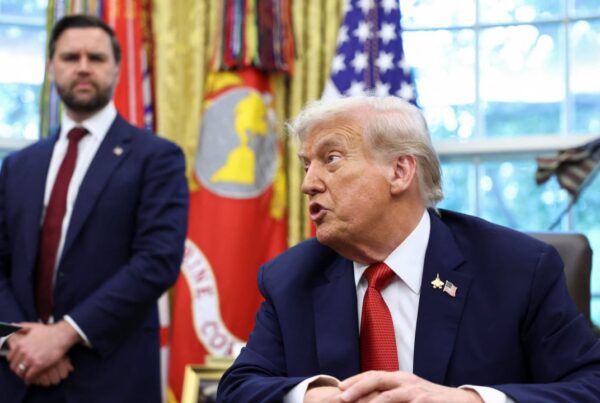Nepal’s political and social crisis has reached its breaking point after Prime Minister K. P. Sharma Oli resigned on Tuesday, September 9, 2025. His resignation came amid a massive wave of youth-led protests known as the Gen Z Movement. Demonstrations erupted across Kathmandu, escalating into violence that left at least 19 people dead and hundreds injured. Protesters set fire to parliament, the Supreme Court, and the residences of senior officials. The turmoil forced authorities to shut down Kathmandu’s international airport, marking one of the country’s gravest crises since becoming a republic.
The unrest began when the government abruptly blocked 26 social media platforms, including Facebook, WhatsApp, TikTok, X, and YouTube. The move sparked outrage, especially among the younger generation who viewed it as a direct assault on their freedom of expression. What started as a digital rights protest quickly evolved into a broader call for government accountability, social justice, and an end to entrenched corruption. Viral trends exposing the lavish lifestyles of political elites’ children, dubbed the “Nepo-baby anti-corruption movement,” fueled further anger and drew thousands more into the streets.
The first major clashes broke out on September 8, 2025, as protesters stormed barricades around the parliament building. Security forces responded with tear gas, rubber bullets, and even live ammunition. Hospitals in Kathmandu reported hundreds of casualties, with many fatalities among students and young activists. The government eventually lifted the social media ban, but the concession came too late to calm the unrest. The sense of betrayal had already hardened into calls for systemic change.
By the following day, the demonstrations spiraled into widespread rioting. Protesters torched political party offices, ministerial residences, and major state institutions. Parliament and the Supreme Court were engulfed in flames, powerful images that symbolized the collapse of state authority. Helicopters circled over Kathmandu as gunfire echoed near the presidential residence, deepening fears of a breakdown in security. The military was deployed to secure vital infrastructure while civilians fled the capital in growing panic.
Amid the chaos, PM Oli delivered his resignation in an official statement. He described the move as a step toward opening dialogue and enabling a constitutional resolution. “Nepal needs unity and peace, not bloodshed,” Oli declared in his brief address. Yet his resignation did little to stem the turmoil. Twenty-one lawmakers from the Rastriya Swatantra Party also resigned, joined by the ministers of Home Affairs, Agriculture, and Health. The political crisis quickly widened into a government collapse.
The economic fallout was immediate. Tribhuvan International Airport suspended all domestic and international flights, disrupting trade and tourism, two pillars of Nepal’s economy. Reports also surfaced of protesters attacking hospitals, including emergency wards, complicating care for the wounded. The tourism sector ground to a halt, foreign investors began withdrawing, and the Nepali rupee tumbled against the US dollar. What began as a digital rights issue had now morphed into a full-scale political and economic emergency.
Analysts argue the crisis reflects deep frustration among Nepal’s younger generation with political elites who have failed to deliver change more than a decade into the republic era. Gen Z protesters demand transparency, clean governance, and structural reform. International media have drawn parallels with the Arab Spring, dubbing this “the Himalayan Spring” to capture its scale and intensity. The digital sphere that triggered the unrest has also amplified it, ensuring that the world is watching in real time.
Global reactions have been swift. The United Nations urged all parties to seek peaceful dialogue and warned of worsening humanitarian consequences if violence continues. India, Nepal’s closest neighbor, temporarily closed its borders to prevent a refugee spillover. The United States condemned the loss of life and urged a peaceful political transition, while the European Union stressed the importance of protecting human rights and safeguarding freedom of expression.
Oli’s resignation is widely seen as historic, yet the path forward remains uncertain. Political parties are scrambling to nominate successors, but with dozens of lawmakers gone, parliament is unlikely to reach consensus soon. Some analysts predict the formation of an interim government, while others believe fresh elections may be inevitable. Still, the larger question lingers: will the demands of Nepal’s young protesters be addressed, or will they be sidelined by traditional political compromises?
For now, Nepal stands at a crossroads. The unfolding events in Kathmandu highlight political fragility that threatens not only domestic governance but also regional stability in South Asia. The Gen Z movement has proven that digital power can mobilize transformative political pressure, but whether it will achieve lasting reform remains uncertain. The future of Nepal may well hinge on whether the momentum of this uprising can be channeled into genuine institutional change.
This crisis marks a turning point in the nation’s modern history. A small Himalayan republic now finds itself at the center of a generational clash between entrenched elites and a rising youth movement demanding accountability. The message from Nepal’s Gen Z is clear: silence is no longer an option. The pressing question is whether the political class will finally listen.
As the Nepal crisis continues to unfold, the country’s next steps after Oli’s resignation will shape its destiny. For readers who want deeper insight into South Asia’s political landscape and its broader regional implications, see our related analysis on Himalayan geopolitics.




